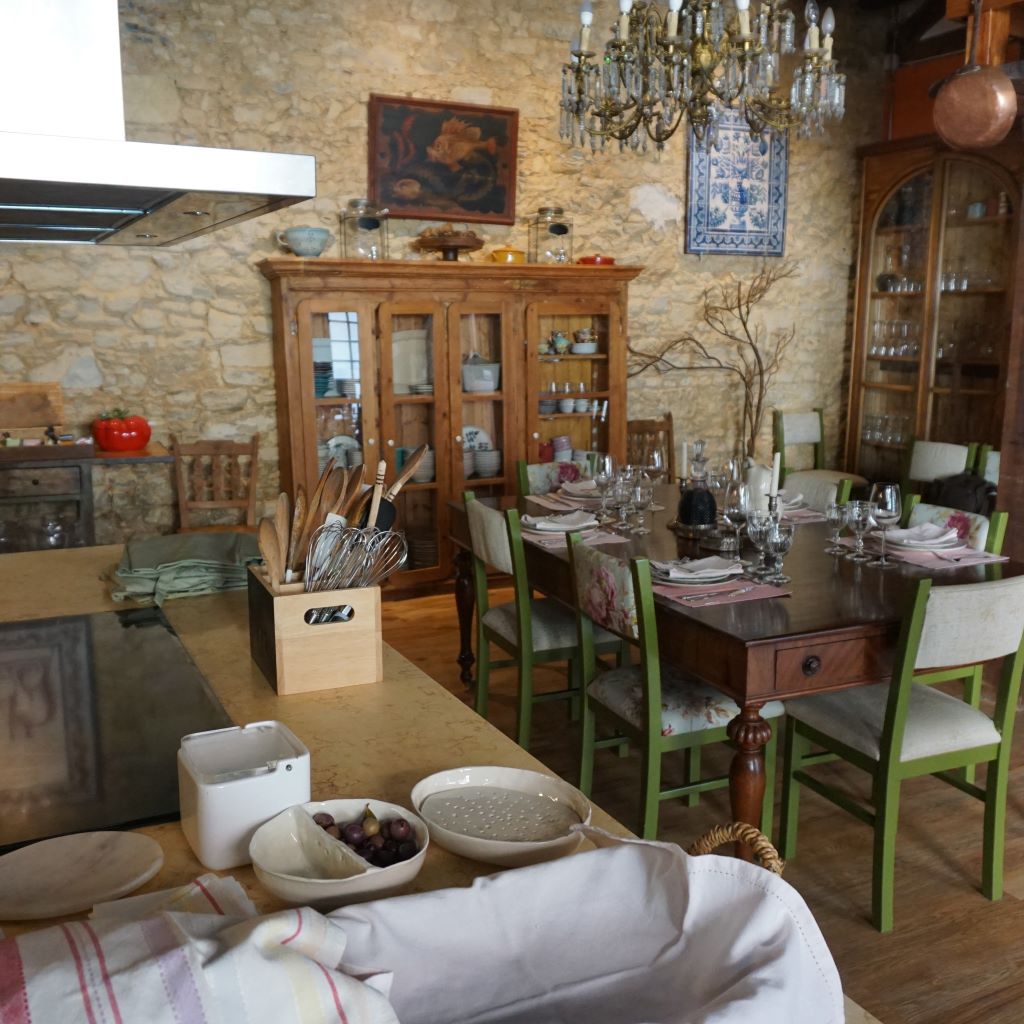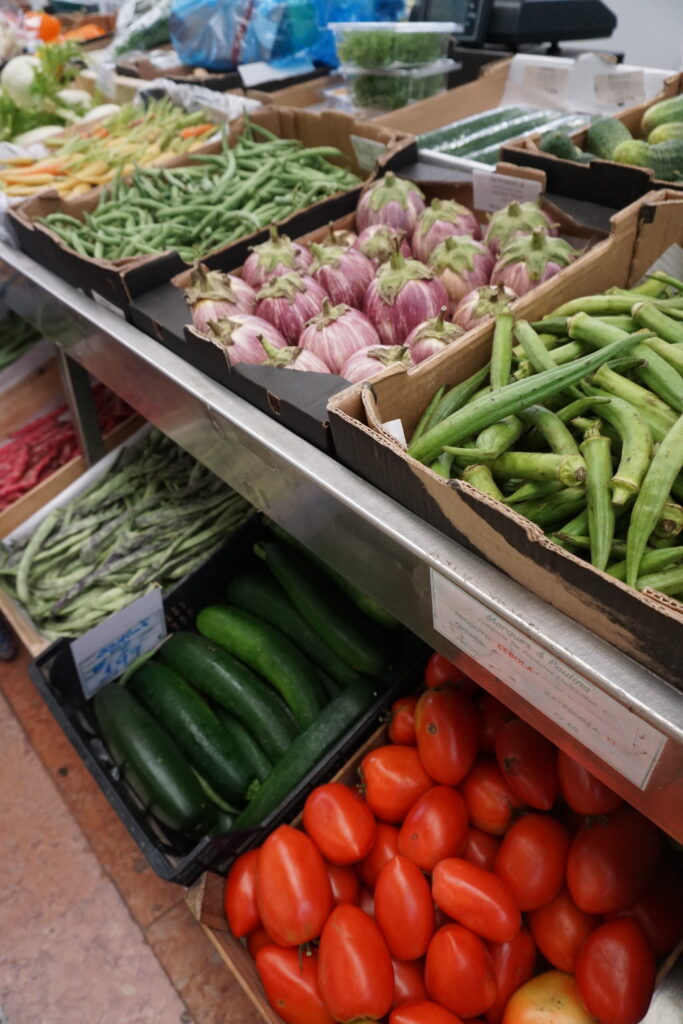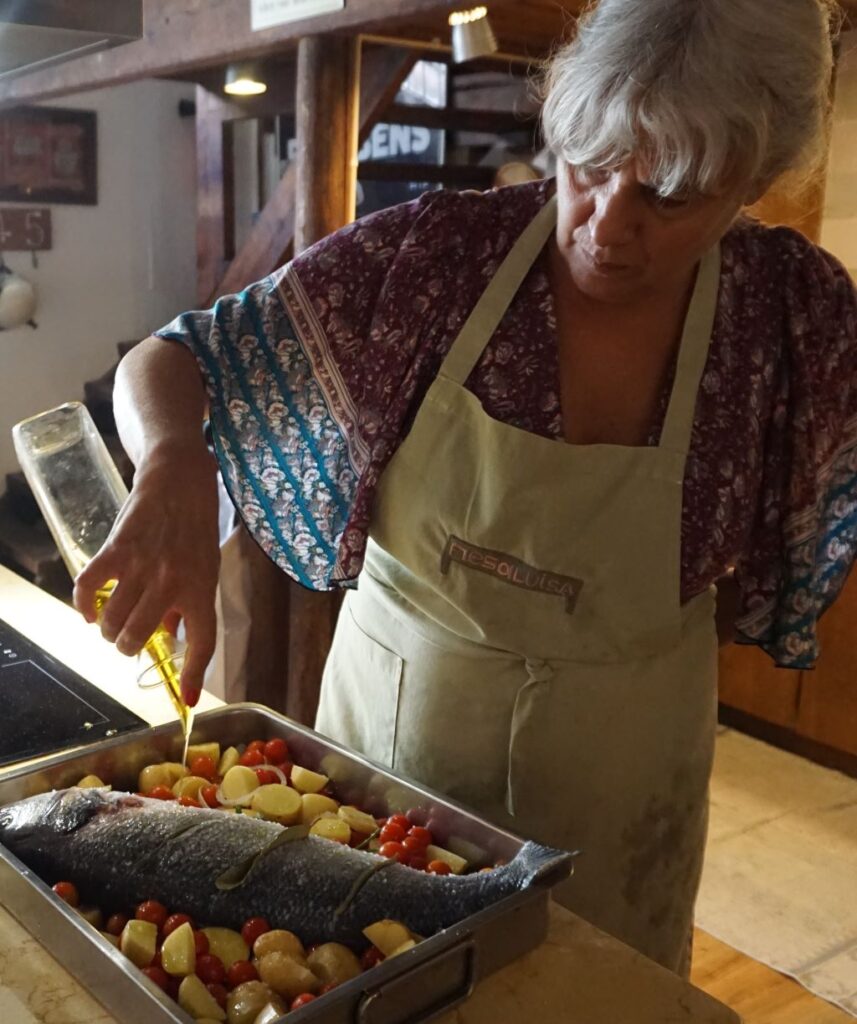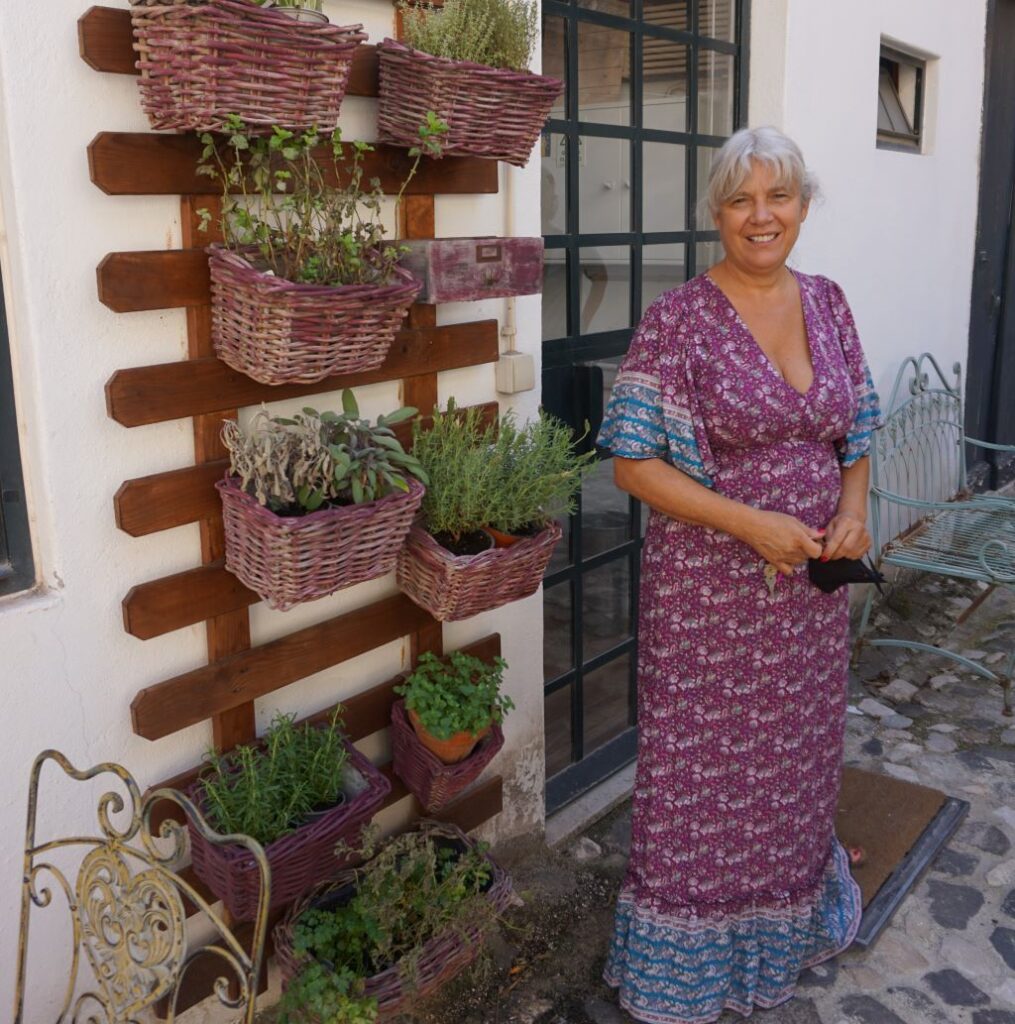Mesaluisa cooking class takes place in a restored fisherman’s warehouse in central Lisbon that oozes Portuguese charm—rough stone walls, weathered wood, and copper pots dangling from the rafters. It’s almost too perfect, and there’s a reason: the space doubles as a studio for Luisa Villar’s popular television cooking show.
But that’s where the pretense ends. Luisa is modest about her celebrity and says the real stars of her show and cooking class are the people and conversations shared around the table.
She’s true to her word. Luisa welcomes us with cups of espresso and the famous Pastéis de Nata custard tarts freckled with cinnamon, still warm from the oven. She explains that there’s no menu for today’s class because she must first understand what her guests like and then see what is fresh in the market.

We don’t need to think twice about our choice for the main course. Portugal has more than 500 miles of coastline, so local seafood tops the list. We start our adventure at the Mercado da Ribeira, the oldest continuously operating food market in the city. Luisa leads us inside to the fish monger’s stall where tiny sardines, a tangle of octopus, hake and other catches-of-the-day sprawl across beds of crushed ice. We agree on a large sea bass, enough to feed all of us.
Then it’s on to the produce section to plan the rest of the meal. It’s late fall and the market overflows with ripe tomatoes still clinging to the vine, carrots of many colors, okra, eggplant, and winter squash. Everyone in the market seems to know Luisa, and there are friendly greetings as we move from stall to stall. Fresh pineapple, potatoes, herbs and more go into the shopping bag. Luisa explains that market etiquette is not touching the produce until we’re ready to buy.
Before long, we’re at the studio and ready to cook. We ooh and aah at her massive spice cabinet. Luisa lights a small alcohol burner and tops it with locally made chorizo. The sausage curls in the heat and cooks into a ring of smoky deliciousness. We sample fresh goat cheese melted over bread and plump figs. One of our companions is on a gluten-free diet so Luisa suggests a flourless chocolate mousse cake for dessert. We break and separate the eggs, mix with sugar and chocolate, then whip the whites and fold them in before popping the cake into the oven.
Soup before the meal is a Portuguese tradition and ours is a simple puree of cooked tomatoes and onions. The main course is oven-baked fish (peixe assado à padeiro), seasoned with bay leaves, salt and pepper and placed on a bed of sliced onions, potatoes and cherry tomatoes. We drizzle it with olive oil and white wine before placing it into the oven. The pineapple from the market is served with dessert, with a chimichurri of mint in a simple syrup.


Then it’s time to gather around the table. Luisa is eager to hear about us, and what’s brought us to Mesaluisa and Portugal. Our cooking companions are from the U.S., and are headed to a mission experience in southern Portugal. They’re avid travelers and share their past experiences hiking the Camino de Santiago from France into northern Spain and Portugal. We’re at the start of a bucket-list journey that will eventually include stops in northern Portugal, Spain, France, Egypt, Jordan and Italy.
We’re curious about Luisa’s cooking show. She explains that she tries to make the premise as close to real life as possible. Filming takes place over two to three hours and at the end of that time, a lucky group of guests arrive for the meal. Just like at home, there’s no time for a do-over is something goes wrong, she says. She likes to invite participants with interesting stories to tell. One show, for example, included guests who were actors, and the conversation was about the challenges of filming scenes that involve eating. For that episode, Luisa cheekily served a saucy pasta dish so they could demonstrate.
Before we know it, the class is over. Luisa asks to take photos of us and hangs them from pins in a wall map to show where we’re from. There are dozens of photos dangling from pins, representing nearly every country in the world. We’re glad we added Mesaluisa to our story and are now part of hers.

